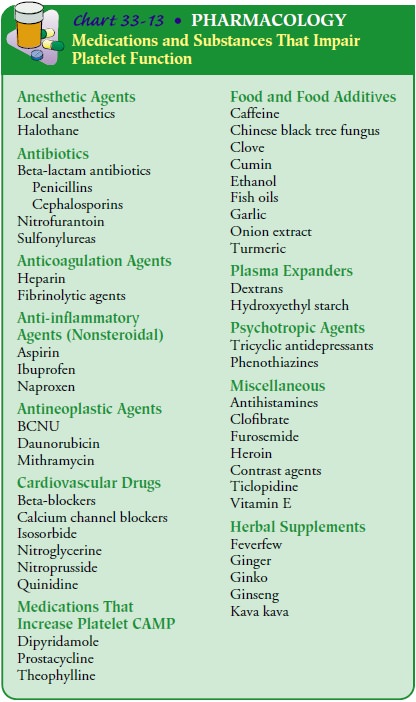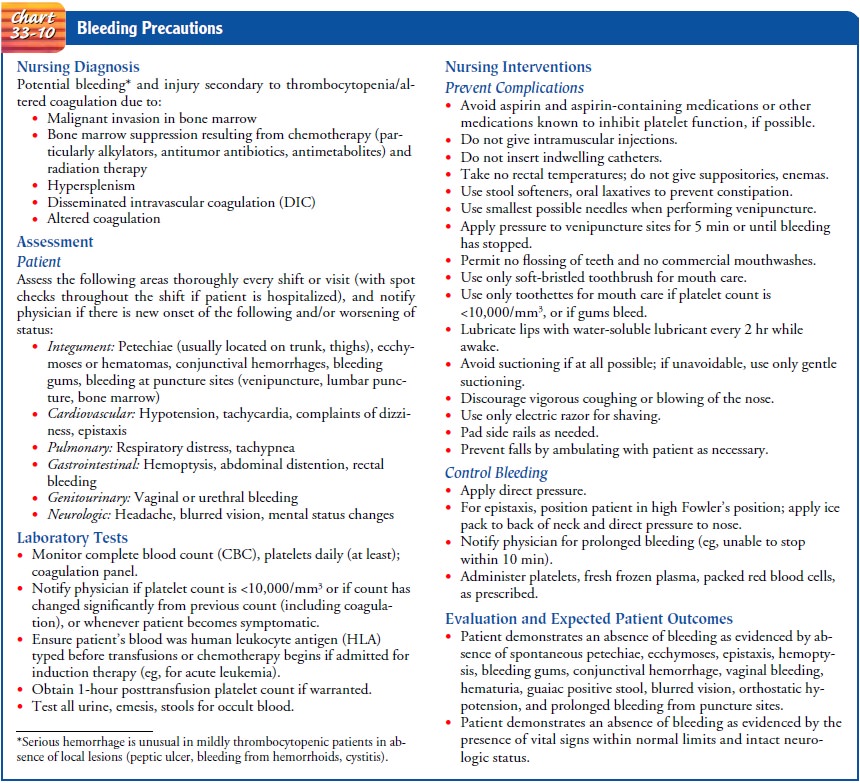Chapter: Medical Surgical Nursing: Assessment and Management of Patients With Hematologic Disorders
Platelet Defects
PLATELET
DEFECTS
Quantitative
platelet defects are relatively common (thrombocy-topenia), but qualitative
defects can also occur. With qualitative defects, the number of platelets may
be normal, but the platelets do not function normally. Platelet function is
most commonly evaluated by the bleeding time; however, this test is a crude
mea-surement at best.
An
important functional platelet disorder is that induced by as-pirin. Even small
amounts of aspirin reduce normal platelet ag-gregation, and the prolonged
bleeding time lasts for several days after aspirin ingestion. Although this
does not cause bleeding in most people, patients with a coagulation disorder
(eg, hemophilia) or thrombocytopenia can have significant bleeding after taking
as-pirin, particularly if invasive procedures or trauma has occurred.
NSAIDs
can also inhibit platelet function, but the effect is not as prolonged as with
aspirin (about 5 days versus 7 to 10 days). Other causes of platelet
dysfunction include end-stage renal dis-ease, possibly from metabolic products
affecting platelet function; MDS; multiple myeloma (due to abnormal protein
interfering with platelet function); cardiopulmonary bypass; and other
med-ications and substances (Chart 33-13).

Clinical Manifestations
Bleeding
may be mild or severe. Its extent is not necessarily corre-lated with the
platelet count or with tests that measure coagulation (prothrombin time [PT],
partial thromboplastin time [PTT]). Ecchymoses are common, particularly on the
extremities. Patients with platelet dysfunction may be at risk for significant
bleeding after trauma or invasive procedures (eg, biopsy, dental extraction).
Medical Management
If the
platelet dysfunction is caused by medication, use of the of-fending medication
should be stopped, if possible, particularly when bleeding occurs. If platelet
dysfunction is marked, bleeding can often be prevented by transfusion of normal
platelets before invasive procedures. Amniocaproic acid (EACA; Amicar) may be
required to prevent significant bleeding after such procedures.
Nursing Management
Patients
with significant platelet dysfunction need to be instructed to avoid agents
that can diminish platelet function, such as certain over-the-counter
medications, herbs, nutritional supplements, and alcohol. They also need to be
assisted to serve as their own advo-cates and to inform their health care
providers (including dentists) of the underlying condition before any invasive
procedure is per-formed, so that appropriate steps can be initiated to diminish
the risk of bleeding. Bleeding precautions should be initiated as ap-propriate
(see Chart 33-10).

Related Topics